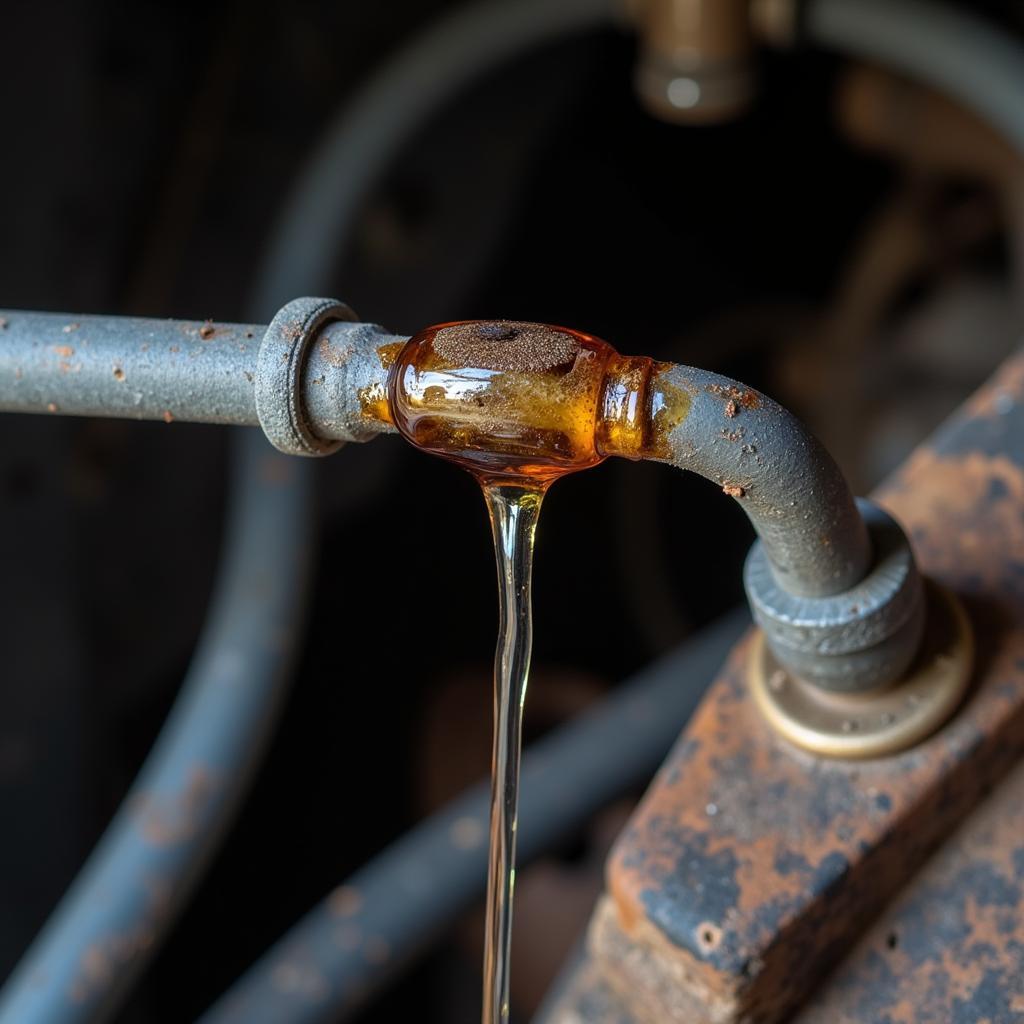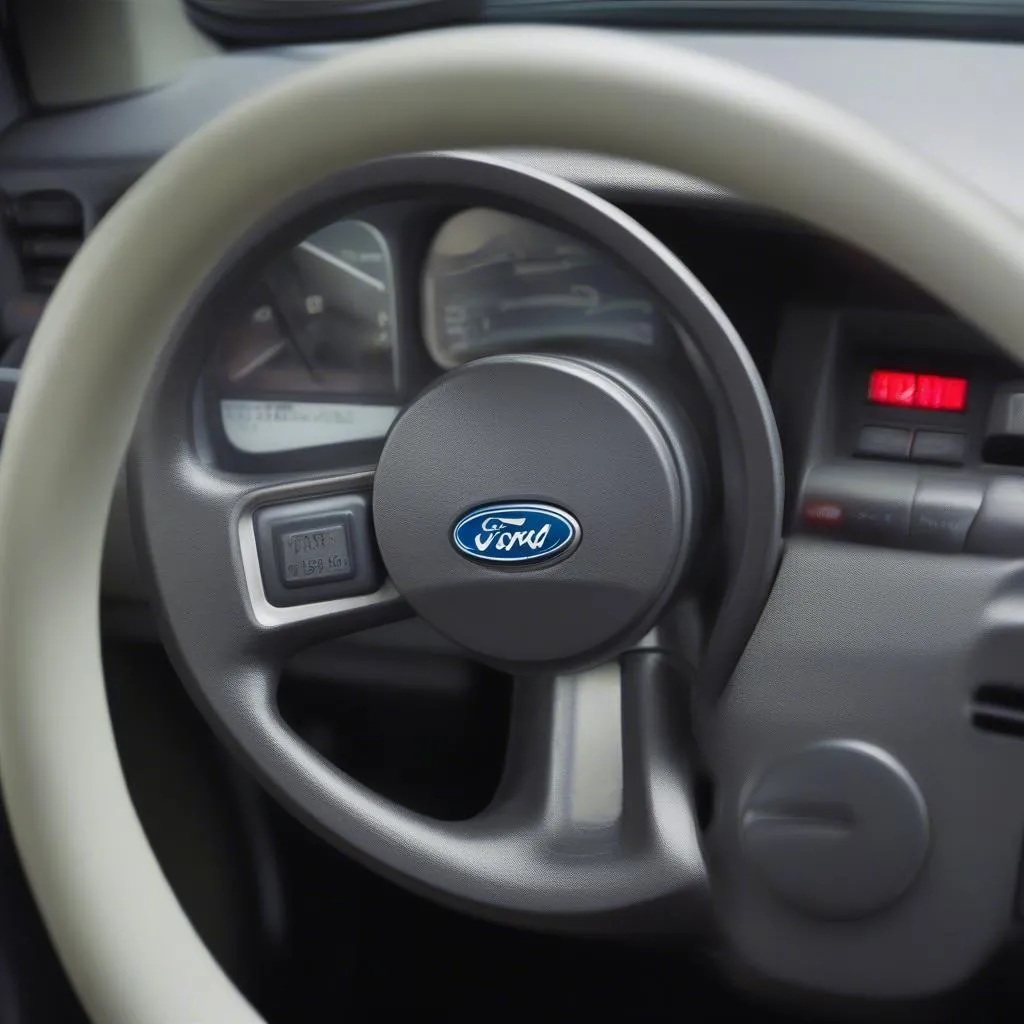That dreaded low brake pressure warning light has illuminated your dashboard, and a wave of concern washes over you. This is a serious issue that demands immediate attention. Ignoring this warning could compromise your safety and the safety of others on the road. This article will guide you through understanding the causes of a low brake pressure warning light, troubleshooting steps, and when to seek professional help.
This warning light, often symbolized by a circle enclosing an exclamation mark next to parentheses containing the letters “BRAKE”, signifies a potential problem with your braking system. It’s crucial to address this promptly to avoid potential brake failure. You might be experiencing a problem similar to the one described on this page about the brake pads warning light on honda crv 2016.
What Does the Low Brake Pressure Warning Light Mean?
The low brake pressure warning light typically indicates one of two things: low brake fluid or a serious leak in your brake system. Brake fluid is the lifeblood of your hydraulic braking system, transmitting the force from your foot on the brake pedal to the brake calipers, which in turn squeeze the brake pads against the rotors, stopping your vehicle.
A drop in brake fluid level can significantly reduce braking power, making it difficult or even impossible to stop safely. This could be due to worn brake pads, a leaking brake line, or a malfunctioning master cylinder. In some cases, the issue might be related to a specific vehicle model, like the 1990 toyota pickup brake warning light.
Troubleshooting the Low Brake Pressure Warning Light
If you see this warning light, the first thing you should do is safely pull over and check your brake fluid level. The brake fluid reservoir is usually located under the hood, and it’s typically a translucent plastic container. If the fluid level is low, adding brake fluid might temporarily solve the problem, but it’s crucial to identify and fix the underlying cause of the leak.
Next, visually inspect your brake lines and calipers for any signs of leakage. Look for wet spots or dripping fluid. If you notice a leak, do not drive the car. Contact a qualified mechanic immediately. Sometimes, issues like the bmw k1200 brake failure warning light require specialized knowledge.
When to Seek Professional Help
If you’re unable to identify the cause of the low brake pressure warning light, or if you suspect a leak in your brake system, it’s essential to seek professional help. A qualified mechanic can diagnose the problem accurately and perform the necessary repairs. Attempting to fix brake issues yourself without proper knowledge and tools can be dangerous.
 Brake System Leak
Brake System Leak
Don’t delay. Your brakes are a critical safety system, and any problems should be addressed immediately. You might find helpful information on other warning lights, like the seat leon oil warning light, to broaden your understanding of vehicle maintenance.
Why is my Brake Pressure Light On Even Though My Brakes Work?
Sometimes, the brake pressure warning light might come on even if your brakes seem to be working fine. This could be due to a faulty sensor, a wiring issue, or a problem with the ABS (Anti-lock Braking System). In such cases, a diagnostic scan is necessary to pinpoint the exact cause. Issues related to brake pressure can sometimes manifest differently depending on the vehicle and the specific pressure. For instance, you might encounter a low brake pressure warning light 90 lbs.
“Regular brake system inspections are crucial for maintaining safety,” says Johnathan Davies, Senior Automotive Technician at Precision Auto Repair. “Don’t wait for a warning light to illuminate before checking your brakes.”
Maintaining Your Brake System
Regular maintenance is key to preventing brake problems. This includes regular brake inspections, fluid flushes, and timely replacement of worn brake pads and rotors. Adhering to a recommended maintenance schedule can help you avoid costly repairs and ensure your safety on the road.
“Preventing brake issues is far more effective and economical than dealing with a major brake failure,” adds Davies. “Simple checks can save you from significant headaches down the road.”
Conclusion
The low brake pressure warning light is a serious signal that should never be ignored. Understanding its causes and taking appropriate action can prevent potential accidents and ensure your safety. If you’re unsure about anything related to your brakes, consult a qualified mechanic immediately. Don’t compromise your safety – address the low brake pressure warning light promptly.
FAQ
-
What should I do if my brake pressure warning light comes on while driving?
Pull over safely and check your brake fluid level. -
Can I drive with the low brake pressure warning light on?
No, it’s unsafe to drive with this warning light illuminated. -
How often should I check my brake fluid level?
Check your brake fluid level at least once a month. -
What causes low brake fluid?
Low brake fluid can be caused by leaks, worn brake pads, or a faulty master cylinder. -
How much does it cost to fix a low brake pressure problem?
The cost depends on the underlying cause and can range from a simple fluid top-up to more extensive repairs. -
Is it safe to add brake fluid myself?
Yes, you can add brake fluid, but it’s essential to use the correct type of fluid and address the underlying cause of the low level. -
How can I prevent brake problems?
Regular maintenance, including brake inspections and fluid flushes, is key to preventing brake problems.

